 Power
eMagazine
Power
eMagazine
Volume 23 delves into the evolving world of power electronics and innovative system design. As technology continues to push the boundaries of performance, efficiency, and reliability, engineers are met with both unprecedented challenges and opportunities.
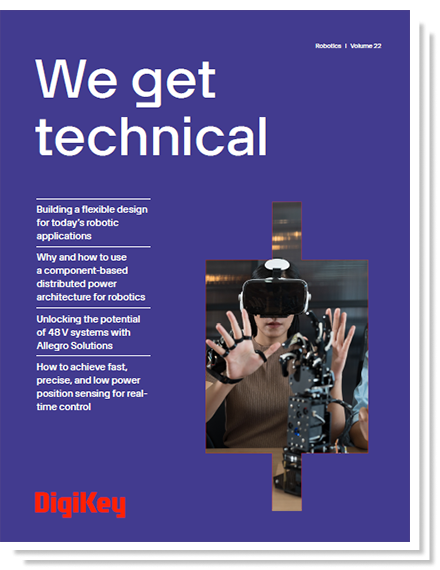 Robotics
eMagazine
Robotics
eMagazine
Volume 22 examines the technological advancements and engineering innovations driving the next generation of robotic systems across industrial, service, and collaborative domains.
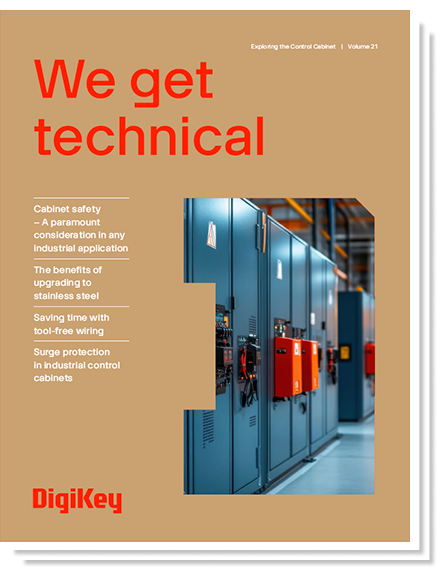 Exploring the control cabinet
eMagazine
Exploring the control cabinet
eMagazine
Volume 21 will cover topics such as speed drives and frequency drives, DIN rail power, cybersecurity, de-energizing circuits, terminal blocks and industrial interconnect, thermal regulation, and more.
 Tools, Test and Measurement
eMagazine
Tools, Test and Measurement
eMagazine
Volume 20 will cover the essential tools, techniques, and technologies shaping today’s electronics and maker landscapes. Whether you’re a seasoned engineer, a passionate hobbyist, or somewhere in between, this edition has something for you.
 Sensors
eMagazine
Sensors
eMagazine
Volume 19 contains the latest advancements in sensor technologies, data acquisition systems, and communication protocols, all of which are shaping the future of the electronics and semiconductor industries.
 Edge AI
eMagazine
Edge AI
eMagazine
Volume 18 is packed with cutting-edge information and practical tips to keep you ahead of the curve in the world of technology.
 Smart manufacturing
eMagazine
Smart manufacturing
eMagazine
Volume 17 will delve into the rapidly evolving world of industrial automation and the technologies shaping the future of manufacturing.
 Embedded and MCUs
eMagazine
Embedded and MCUs
eMagazine
Volume 16 explores the latest advancements in embedded systems and MCUs, offering insights into how engineers can harness cutting-edge technology to develop next-generation applications.
 Sustainability and energy harvesting
eMagazine
Sustainability and energy harvesting
eMagazine
Volume 15 showcases the ingenuity and forward-thinking that are driving the sustainable energy landscape forward.
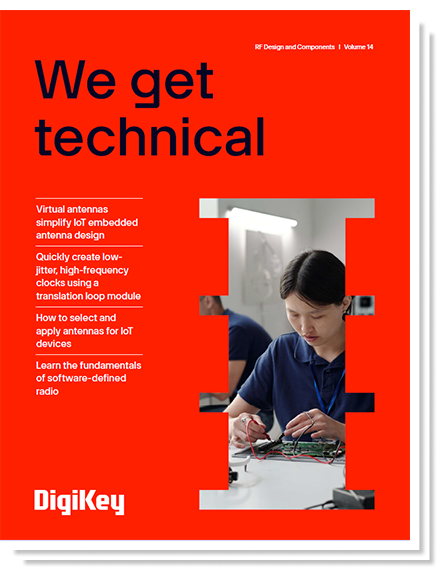 RF Design and components
eMagazine
RF Design and components
eMagazine
Volume 14 has been created to inspire and support engineers tackling RF design projects. It is not just a guide to understanding RF technology but a resource for addressing the practical complexities of modern RF systems.
 Industrial sensors
eMagazine
Industrial sensors
eMagazine
Volume 13 will dive into the cutting-edge technologies that are transforming the world of industrial automation and communication. This issue will delve into some of the most crucial advancements that are optimizing efficiency, reliability, and flexibility across the industry.
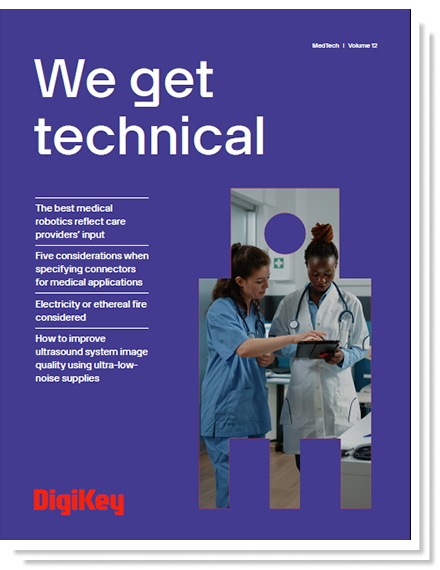 MedTech
eMagazine
MedTech
eMagazine
Volume 12 is designed to provide engineers with the insights, knowledge, and inspiration needed to tackle the challenges of MedTech design. We will explore how to select and apply the right medical components, guidance for designing medical equipment alarms, and a close look at how medical robots are transforming the industry.
 Connectors
eMagazine
Connectors
eMagazine
Learn how choosing the right connectors, cables, and assemblies isn’t just about functionality in Volume 11. It is also about enhancing performance, reliability, and efficiency across all applications. This document will provide technical insights and practical tips on selecting components that meet the highest standards.
 Edge AI
eMagazine
Edge AI
eMagazine
Edge AI and machine learning are revolutionizing the way systems process data, enabling real-time decision-making at the source. In volume 10, these technologies are deployed on edge devices, located close to the data source, reducing latency, bandwidth usage, and energy consumption.
 Transportation
eMagazine
Transportation
eMagazine
Volume 9 explores how in our rapidly evolving transportation landscape, groundbreaking technologies are revolutionizing the way we travel.
 Wireless
eMagazine
Wireless
eMagazine
Wireless communication is a cornerstone of modern technology, as explored in volume 8, revolutionizing how we interact with the world and each other.
 Sensors
eMagazine
Sensors
eMagazine
In volume 7, we explore 10 specific sensor technologies that enhance scalability, design performance, and smart engineering functions for evolving needs.
 Robotics
eMagazine
Robotics
eMagazine
The role of robotics in manufacturing has evolved over the past 70 years. From welding to collaborative robots, volume 6 explores how their presence on the factory floor has become commonplace.
 Programmable logic controllers
eMagazine
Programmable logic controllers
eMagazine
Programmable Logic Controllers (PLCs) have become indispensable in the world of industrial automation and control systems. In volume 5 we discover how their versatility allows for complex operations to be managed with precision and reliability.
 Power
eMagazine
Power
eMagazine
As power conversion applications continue to evolve, so do the conversion technologies themselves, as explored in volume 4. Having higher efficiency power conversion can not only increase reliability, it can actually help to future proof your design.
 Advancing the future of automation
eMagazine
Advancing the future of automation
eMagazine
Volume 3 covers how rising demand and cost of goods continue to put pressure on manufacturers. To meet consumer demands, they need to think differently.
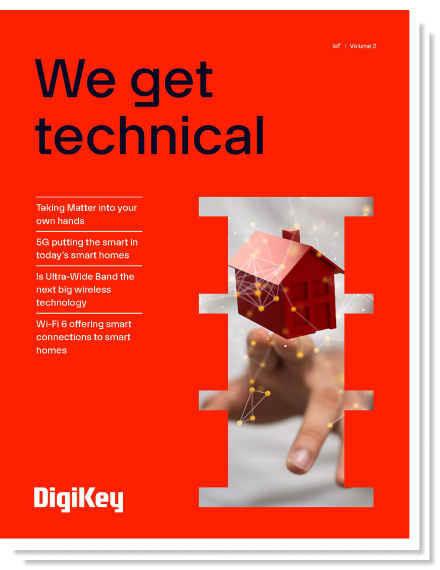 IoT
eMagazine
IoT
eMagazine
Volume 2 discusses how the Internet of Things (IoT) has emerged as a transformative and revolutionary concept, reshaping the way we interact with technology and the world around us.
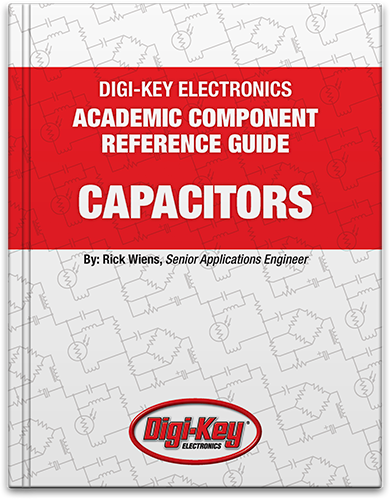 Capacitors
eBook
Capacitors
eBook
An introduction to selecting capacitors, also known as caps or condensers, which are electronic components that store energy in an accumulated electric field between two parallel, conductive plates separated by an insulator. Capacitors oppose changes in voltage potential in a circuit.
 Resistors
eBook
Resistors
eBook
An introduction to selecting fixed-value resistors which are passive electronic components that limit or resist current flow in a circuit. Resistors drop proportional voltage across its terminals and produce heat in response to current flow through the device.
 RISC V
eBook
RISC V
eBook
RISC-V is a simplified, open-source hardware instruction set designed for high speed and low-power processor applications. With the RISC-V architecture, developers have easier access to RISC-V based processors in designing embedded applications and high-powered computers.
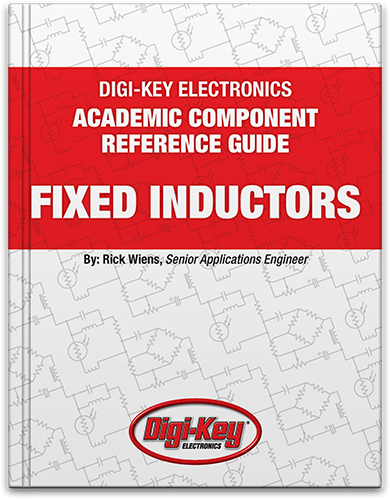 Fixed Inductors
eBook
Fixed Inductors
eBook
An introduction to selecting fixed Inductors, also known as coils or chokes, which are electronic components that store energy in a magnetic field and oppose any change in the current that passes through them.
 Innovation Handbook
eBook
Innovation Handbook
eBook
Need inspiration for the ideation stage of a project? The innovation handbook contains a treasure trove of information and details on a wide variety of topics and devices to help in the decision-making process. Whether a student, teacher, maker, or engineer, keep this reference handy to explore all the aspects of project development and general electronics knowledge.
 Safety in manufacturing
eMagazine
Safety in manufacturing
eMagazine
Volume 1 explains how manufacturing has the potential to be one of the most dangerous places on Earth. Without proper mitigation through safeguards and strict adherence to safety regulations workers in this environment face serious bodily harm or worse.
We are open to suggestions!
Have an idea for a magazine topic? Have feedback to make your experience better? Let us know.







